Michelangelo (1475-1564)
Get a Michelangelo Certificate of Authenticity for your painting or a COA for your Michelangelo drawing or sculpture.
For all your Michelangelo artworks you need a Certificate of Authenticity in order to sell, to insure or to donate for a tax deduction.
How to get a Michelangelo Certificate of Authenticity is easy. Just send us photos and dimensions and tell us what you know about the origin or history of your Michelangelo painting, drawing or sculpture.
If you want to sell your Michelangelo painting, drawing or sculpture use our selling services. We offer Michelangelo selling help, selling advice, private treaty sales and full brokerage.
We have been authenticating Michelangelo and issuing certificates of authenticity since 2002. We are recognized Michelangelo experts and Michelangelo certified appraisers. We issue COAs and appraisals for all Michelangelo artworks.
Our Michelangelo paintings, drawings and sculptures authentications are accepted and respected worldwide.
Each COA is backed by in-depth research and analysis authentication reports.
The Michelangelocertificates of authenticity we issue are based on solid, reliable and fully referenced art investigations, authentication research, analytical work and forensicstudies.
We are available to examine your Michelangelo painting, drawing or sculpture anywhere in the world.
You will generally receive your certificates of authenticity and authentication report within two weeks. Some complicated cases with difficult to research Michelangelo paintings, drawings or sculpture take longer.
Our clients include Michelangelo collectors, investors, tax authorities, insurance adjusters, appraisers, valuers, auctioneers, Federal agencies and many law firms.
Do you think you may own a painting, drawing or sculpture by Michelangelo?
We perform Michelangelo art authentication, appraisal, certificates of authenticity (COA), analysis, research, scientific tests, full art authentications. We will help you sell your Michelangelo or we will sell it for you.
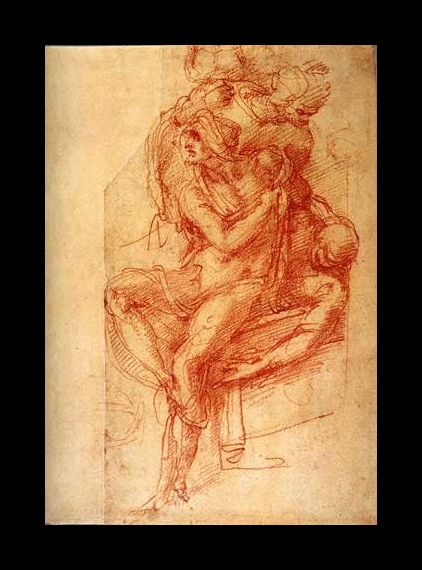
Michelangelo was an Italian Renaissance sculptor, painter, poet and architect. In all aspects of the name, he was truly an original Renaissance Man. Michelangelo was a rival of fellow Renaissance master Leonardo da Vinci, however, some art historians would argue that Michelangelo was a better “pure” artist, since his interests did not generally extend to beyond the arts.
Born Michelangelo di Lodovico Buonarroti Simoni, he became commonly known in the art world as Michelangelo. Not only is he considered one of the most talented of the Italian Renaissance Masters, but the most documented as well, perhaps due to the fact that two biographies about him were written in his lifetime. Art historians today know more about his work than any other artist from that period, leaving a wealth of information for authenticators and appraisers to work with.
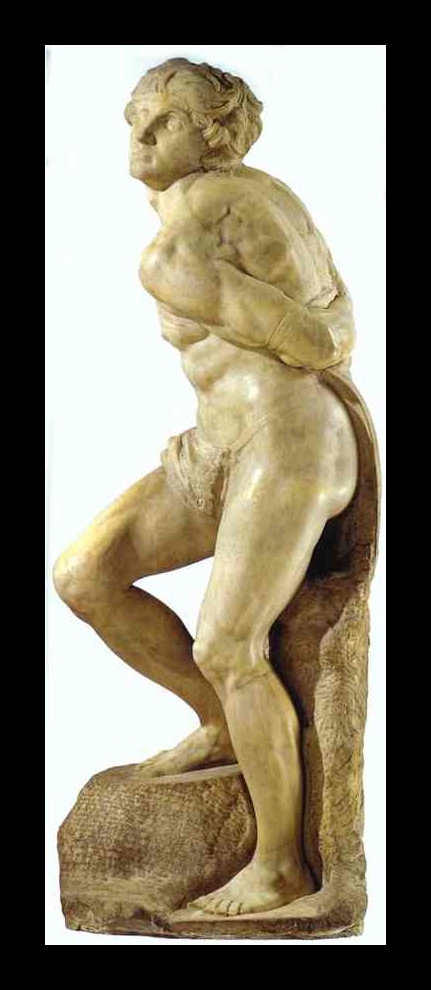
As an artist, Michelangelo was more of a sculptor, and had a relatively low opinion of painting. Nonetheless, he ventured into the foray of painting and created masterpieces anyway, generally in the form of frescoes, most famously on the Sistine Chapel in Rome.
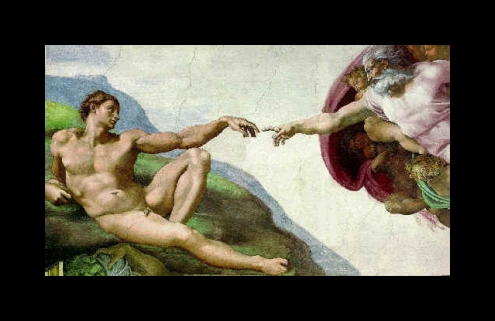
Michelangelo was also a talented architect, and created the design for the dome of St. Peter’s Basilica in Rome, as well as the Laurentian Library in Florence. However, it was his sculptures that he became most well known for. Two of his most famous sculptures are “David” and the “Pieta.” The “Pieta” was sculpted when Michelangelo was only 24 years old.
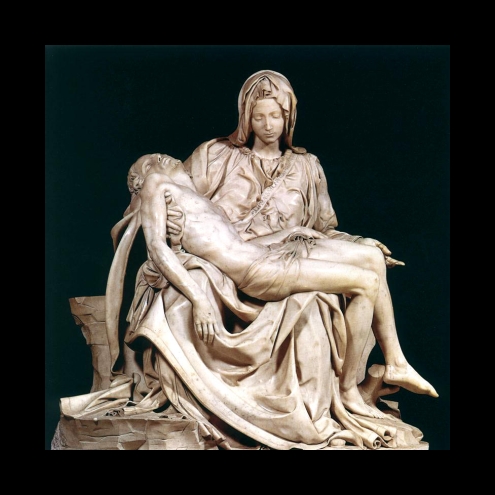
Unlike his counterpart, da Vinci, Michelangelo did not embrace nature, but fought against it in his statues. His statues were the image of otherworldly perfection, and not necessarily realism. Note the size of David’s head and hands…they are slightly larger than if this were a true anatomical study.

Throughout his career, Michelangelo was fairly prolific in all aspects of art from sketching and sculpture and even in his least favorite, painting. He began his studies when he was only 13, and was apprenticed to sculptor Bertoldo di Giovanni and painter Domenico Ghirlandaio where he worked as a paid apprentice for three years. Later, he studied under Lorenzo di Medici.
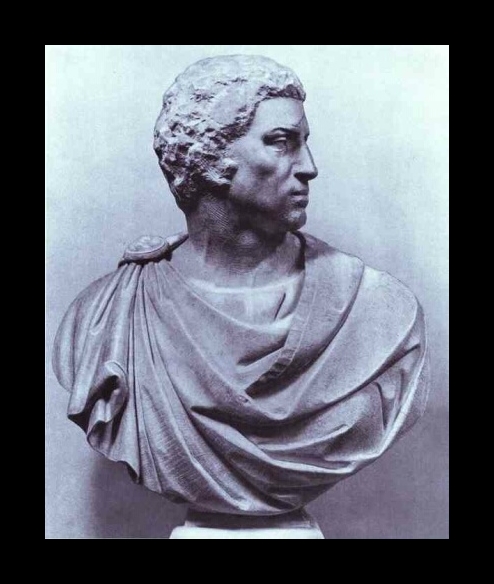
Michelangelo worked and lived for most of his life in Florence, with the exception of living in Venice and Bologna briefly during the French invasion. He also worked in Rome and created a number of commissions for the church and the state. It was his work in Rome that made Michelangelo known as “the inventor of obscenities.” Many of his sculptures and frescoes were painted with genitalia in view, and the church did not like this. Thus, it is said that Michelangelo is responsible for the “fig leaf campaign” and all works were ordered to have genitals covered with leaves, starting with Michelangelo’s pieces. Some of these leafs remain on his original pieces today, and some have since been removed.

Michelangelo was also said to have been an arrogant man, and regarded himself very highly. His works were also highly regarded by others in his lifetime, but Michelangelo was not satisfied with that. It is said that on a number of occasions he created statues to look like they were from ancient Rome and even chipped at them and buried them. He was even successful as passing them off as being of ancient origin and sold them at auction. Once the truth of his deception was revealed, instead of being punished, the buyer, Cardinal Raffaele Riario, was actually impressed and hired him to create a statue of Bacchus.
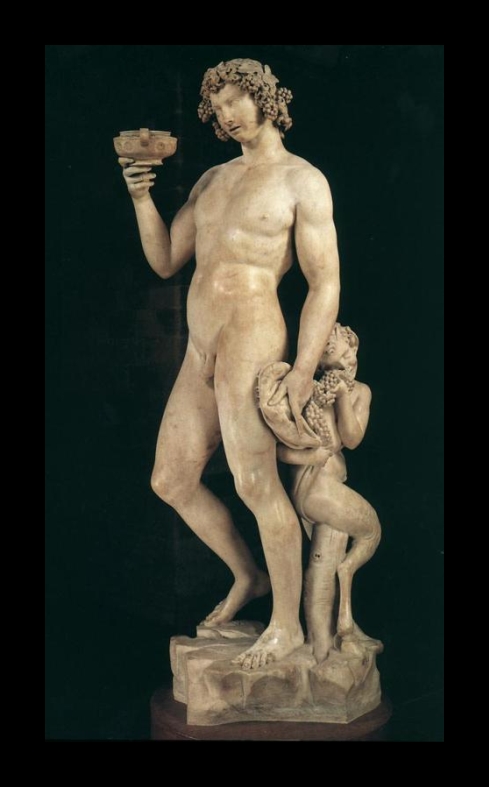
Though Michelangelo is a very well known Renaissance artist that worked over 500 years ago, he was also very prolific and created artworks in many different mediums. The possibility for finding one of his pieces today, hiding in a book or a church attic is still quite great.
Michelangelo Discoveries
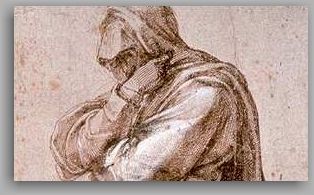
Recently, a drawing sold for 10 million dollars, at auction, in London. This was after it had been attributed to Michelangelo. It was found by chance, in a stack of old sketches. Before the attribution to Michelangelo, it may have been difficult to get 500 dollars for it. It is only price that makes the Michelangelo drawing exceptional. Unidentified works of art which become valuable after they have been attributed are common. There is no shortage of works by well known painters or important artists which have not yet been identified. The difficulty lies in obtaining the attribution or art authentication that is needed.
The Michelangelo drawing is certainly not the last great discovery to be made. There are other million dollar paintings silently hanging in obscurity.
What is common is for paintings to be worth 10 to 25 times more than the owners realized.
Paintings thought to be worth only a few hundred dollars, that sell for $5,000 to $10,000 once they are correctly identified.
Works estimated in the low thousands, which turn out to be worth $20,000 to $50,000 after research.
Once in a while, a greater discovery, a painting no one had paid much attention to, sells for over $100,000 after art authentication.
Finally, there are the rarer finds which make headlines, when the million dollar mark is broken.

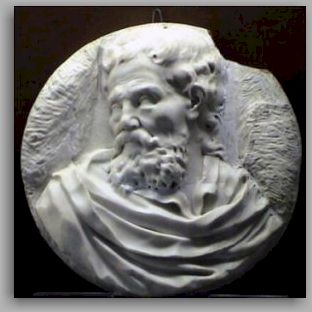
A unique bas-relief, which might be the first known self-portrait of Michelangelo, has emerged from a private collection, art historians announced in Florence this week.
The sculpture, a white marble round work attached to a flat piece of marble, with a diameter of 14 inches depicting a bearded man, was lent by a noble Tuscan family to the Museo Ideale in the Tuscan town of Vinci for a study on the relationship between Michelangelo and Leonardo.
“The work speaks for itself: it is a very high-quality sculpture which depicts Michelangelo. The skilled chiselling on the back makes us think it might be a self-portrait,” Alessandro Vezzosi, director of the Leonardo da Vinci Museo Ideale, told Discovery News.
The bas-relief would have been sculpted around 1545, when 70-year-old Michelangelo Buonarroti (1475-1564) had already completed masterpieces such as the David, the Pietà in the Basilica of St. Peter, the Medici chapels in Florence and the Last Judgement in the Sistine Chapel.
Although there are no examples of low reliefs from his later phase, Michelangelo did work on bas-reliefs when he was young. Indeed, he produced at least two relief sculptures, the Madonna of the Stairs and the Battle of the Centaurs, by the time he was 16 years old.
“I first saw the portrait about seven or eight years ago, when the owner brought it to my house in Tuscany. To my eyes then and to my eyes now it is surely a portrait of Michelangelo from the mid-sixteenth century, which itself is very rare, and it is a very fine object,” James Beck, professor of art history at Columbia University and the author of “The Three Worlds of Michelangelo,” told Discovery News.
“It is the only portrait of Michelangelo in marble and in relief that I am aware of from his lifetime.”
According to Beck, the sculpture could also be the work of Niccolò Tribolo or Pierino da Vinci, the nephew of Leonardo who died at only 23.
“Pierino was an extraordinary sculptor. Enough to say that 19th century art historians often attributed his works to Michelangelo. Whoever the author, this marble portrait is very precious as it adds new knowledge to the image we have of Michelangelo,” Vezzosi said.
The bas-relief is consistent with known portraits of the Renaissance master, such as paintings by Giuliano Bugiardini and Jacopino del Conte, kept at the Casa Buonarroti museum in Florence, and bronzes by Daniele da Volterra, on display at the Ashmolean Museum in Oxford, England.
Michelangelo left no documented self-portraits. Art historians have speculated that he painted his own image in the flayed skin of St. Bartholomew in the Last Judgment, and in the head of Nicodemus in the Florentine Pietà.
“This could be the first known self-portrait of Michelangelo. But we are cautious, as more studies are needed,” Vezzosi said.
The marble work will be the centerpiece of an exhibition on the image of Michelangelo in the coming months.
By Rossella Lorenzi
Discovery News

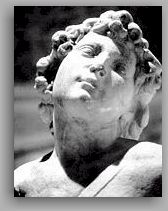
In 1996, a damaged statue that had adorned a fountain in the foyer of a mansion on 5th Avenue since 1906, was identified as the Cupid, sculpted by Michelangelo for one of his patrons, the banker Jacopo Galli. This is the only sculpture by Michelangelo in the United States, which is why it has been nicknamed the “Manhattan Cupid”.
Cut in marble, about one meter high, the statue has lost its arms, and is broken just a bit below the knees. A drawing from the 18th century shows it in its original condition : Cupid standing, in a somewhat dancing position, shooting an arrow toward his left. A vase behind his left leg helped support the figure.
Purchased by the French government, when it bought the Payne-Whitney mansion (now the site of the French Embassy Cultural Services), the Manhattan Cupid belongs incontestably to France. But like the Payne-Whitney mansion (one of the most elegant mansions on 5th Avenue) and its interior decoration, which is representative of the way great American art collectors of the early 20th century showed off their taste, it is rightly considered to be a “historical landmark” of New York City.
The attribution of this work to Michelangelo, suggested in 1996 by the professor Kathleen Weil-Garris Brandt, specialist in Italian Renaissance art, was quite a surprise. The fact that the work was in such a widely visited spot, in the foyer of the French Embassy Cultural Services on 5th Avenue, made this announcement even more spectacular.
The work is not entirely unknown. It had already been attributed to Michelangelo in 1902, by Stefano Bardini, an antique dealer from Florence.
This thesis was championed in 1968 and again in 1981 by Alessandro Parronchi, well-known for his many books about the artist.
In 1992, James Draper compared the Cupid to the works of one of Michelangelo’s masters, the Florentine sculptor Bertoldo di Giovanni. And the drawing he discovered, showing the Cupid before it was broken, added weight to his argument that it was in reality a work by Michelangelo. But the main problem was that Jacopo Galli’s Cupid, which could be identified as the “Manhattan Cupid”, was an early work by the artist, most likely sculpted at the age of 22 or 23.
Most of the sculptures made by Michelangelo during his early years are in Florence (the Virgin on the Stairs, the Battle of the Centaurs, and the Bacchus, that belonged to Jacopo Galli). Other works from Bologna and the National Gallery in London will help put the “Manhattan Cupid” in the artistic context of Michelangelo’s young years.

Cupid


The Prado Museum in Madrid has recently discovered that it has been the proud owner, for 70 years now, of two Michelangelo sketches. The sketches depict the “Day of Judgement” on the ceiling of the Sistine Chapel. They were discovered hiding under Goya’s ‘The countess of Chinchón’. The sketches were examined by two experts, Nicholas Turner and Paul Joannides, following which the Prado Museum certified their authenticity as works by the Renaissance genius Michelangelo Buonarroti (1475-1564).
In 1930 the collector Fernandez Durán donated a group of 8 drawings that were considered to be from Michelangelo’s workshop but this recent confirmation has shown that at least two are by his own hand. They are black pencil drawings, shoulder sketches, that were part of the preparation for his work in the Sistine Chapel.
Michelangelo made many such sketches most of which he threw away as having no value but these two now offer significant insight into the creative process of Michelangelo.
The sketches will be exhibited later this year as part of an exhibition of XVI century drawing at the Prado.

New Lease of Life for Michelangelo’s Secret Drawings
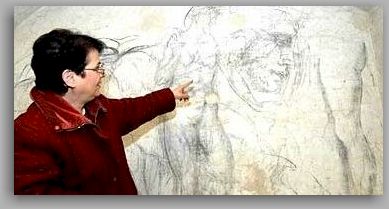
Drawings by Michelangelo in the basement of St Lorenzo church, Florence
Experts in Florence are restoring drawings Michelangelo doodled on the walls of a cell-like room in which the artist hid for six weeks while the Medici family wanted him dead.
Mould had sprouted and salts had risen up the walls of the dank room under the Medici chapel. It was there that Michelangelo lay low in 1530 after losing the battle for a Florentine republic against the powerful Medici family, his former patrons.
The collection of around 50 “doodles”, first discovered by Paolo dal Poggetto, include a self-portrait, a life-size risen Christ and some sketches experts believe are copies of figures the artist had painted earlier on the ceiling of the Sistine chapel.
Some have been covered with layers of paint or badly damaged by floods and the breath of thousands of people allowed to visit the small, unventilated cell after it was first discovered. Now, restorers have removed human remains found beneath the room, possibly victims of the plague, which continued to contaminate the air and walls.
Scholars, some of whom have questioned the authenticity of the drawings, will be able to view them by the end of this year.
Michelangelo initially flourished under the patronage of the Medici family, which lorded over Florence in the early 16th century. He designed the Medici chapel as the family burial place.
Relations turned sour when the artist became director of fortifications for the republic which ousted the Medicis from Florence in the late 1520s.
“I hid in a tiny cell,” he wrote, “entombed like the dead Medici above, though hiding from a live one. To forget my fears, I fill the walls with drawings.”
The Medici sentence on Michelangelo was eventually lifted by Pope Clement VII, himself a member of the Medici family, so the artist could continue work on the chapel and tombs for the Medici princes. He left Florence in 1534 without finishing the job.
Still wondering about a very old sketch or sculpture in your family’s estate? Contact us… it could be Michelangelo.
Reviews
1,217 global ratings
5 Star
4 Star
3 Star
2 Star
1 Star
Your evaluation is very important to us. Thank you.
